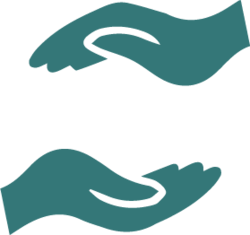Photo: Michael Bamford - CC BY-NC-ND 2.0
The undersigned are experts in cetacean biology and behaviour, including several who specialise in orcas (also called ‘killer whales’).
Interactions between orcas (which we will refer to as ‘Iberian orcas’ below) and ships along the coasts of the Iberian Peninsula (Spain and Portugal) as well as in neighbouring waters provoke keen interest from the public. We are worried about the fact that factual errors regarding these interactions are repeated in the media and embellished with a story – devoid of any scientific or genuine basis – according to which these animals attack boats aggressively or look to take revenge on sailors. We believe that this story inappropriately gives cetaceans human motivations and we fear that its perpetuation does not result in punitive responses from sailors or administrators. Orcas have shown a wide range of behaviours during interactions, including many corresponding to playful social behaviour.
Consequently, we would like to clarify facts based on the scientific evidence available. Most of this information comes from a peer reviewed article published in Marine Mammal Science in 2022 by several signatories of this letter.
Iberian orcas are classified on the International Union for the Conservation of Nature’s (IUCN) red list as being in critical danger of extinction. Their population is likely less than forty individuals. These orcas represent a geographically isolated and genetically distinct sub-population, which mainly feed on bluefin tuna.
These disruptive interactions with ships truly started in July 2020. To date, at least eleven juveniles and four adult females have been identified as participating or observing. There is no evidence of the existence of a recognisable ‘leader’ who would be at the head of this interference. Researchers have given these fifteen orcas the Latin name Gladis and an individual name: for example, Gladis Blanca or Gladis Negra (respectively White Gladis and Black Gladis in English). We discovered that the juvenile female Gladis Negra - initially reported to have interacted with boats - had a laceration on her head at the start of spring 2020 and an injury behind her dorsal fin later in 2021. The origin of the two injuries remains unknown.
The nature of the interactions is distributed as follows: no contact with the ship, light or moderate contact with minor or no damage to the ship, significant contact with serious damage (preventing sailing). Since spring 2021, at least five damaged ships sank. Serious damage is produced in only 20% of these interactions.
Despite damage caused to ships, we believe that is it wrong to consider these interactions as ‘attacks’. Although the boats (rarely) had teeth marks in some places, the predominant damage to the rudders and the keels were due to collisions or water hammers to the head or body. Orcas do not demolish the rudders like they would if they were hunting. Even if their behaviour is scary (and costs money) from a human perspective, from the orcas’ perspective it appears rather recreational.
Orcas, like any other species of dolphin, are incidentally known for starting cultural ‘trends’ – meaning new behaviours that last briefly in time and develop within a given population, such as carrying dead fish on their heads, and which we could compare to our clothing ‘trends’. Although interactions with ships can represent a similar phenomenon, they persist for a longer time than a trend kind of behaviour, spreading it throughout the population, and have a more and more significant impact. Nevertheless, it is possible that, following the examples of previous trends, this behaviour will disappear as suddenly as it appeared.
We are urging the media and the public to no longer construct projective stories about these animals. In the absence of any additional proof, people must not presume to understand their motivations. The orca is an intelligent and socially complex species. Each population has its own culture which includes various vocalisations (called dialects), preferences when it comes to prey, hunting techniques, and even different social structures and migratory behaviours. Iberian orcas present a behaviour which, among cetaceans, has never been seen with such regularity. Even in the days of industrial hunting on wooden vessels, while much bigger whales had a reputation for smashing or damaging ships, such incidents were relatively rare. Science still cannot explain why Iberian orcas act this way, even though, as we noted earlier, such behaviour is most likely linked to playing and socialisation rather than aggression. It is unfounded and potentially dangerous for these animals to claim that it is about vengeance for past wrongs or to spin another melodramatic story.
While we are at sea, we are in the realm of marine life. We do not have the right to punish wildlife for being wild. We must keep cool while animals present previously unseen behaviours, and we must redouble our efforts to adapt our own actions and behaviours in their presence. The survival of species with whom we share this planet depends on it.
Signatories:
- Dr Naomi A. Rose, Scientific Director, Institute of Marine Mammal Biology and Animal Welfare, United States
- Dr Robin W. Baird, Director of the Hawaii programme, Cascadia Research Collective, United States
- Dr Giovanni Bearzi, President, Dolphin Biology and Conservation, Italy
- Dr Maddalena Bearzi, President, United States Marine Conservation Society, United States
- Dr Jaime Bolaños, Executive Director, Caribbean-Wide Orca Project (CWOP), Sea Vida Coordinator (Venezuela), Venezuela
- Dr Inês Carvalho, Population and Conservation Genetics Group, Instituto Gulbenkian Ciência, Portugal
- Dr Mel Cosentino, Marine Mammal Researcher, Aarhus University, Denmark
- Dr Volker Deecke, Wildlife Conservation Professor, University of Cumbria, United Kingdom
- Dr Rocío Espada-Ruiz, University of Seville, Ecolocaliza, GTOA (Grupo de Trabajo Orca Atlántica/Atlantic Orca Working Group), Spain
- Dr Ruth Esteban, Madère Whale Museum GTOA, Portugal
- Dr Andrew Foote, PhD Researcher, Centre for Ecological and Evolutionary Synthesis, University of Oslo, Norway
- Dr Tilen Genov, Morigenos – Slovenian Marine Mammal Society, IUCN Group of Cetacean Specialists, Slovenia
- Dr Deborah Giles, Science and Research Director of Wild Orca, United States
- Dr Christophe Guinet, Research Director, CNRS, Chizé Biological Research Centre, France
- Dr Erich Hoyt, Research Fellow, Whale and Dolphin Conservation (WDC) and IUCN SSC/WCPA Marine Mammal Protected Areas Task Force co-chair, United Kingdom
- Dr Eve Jourdain, Thesis Director and Research Fellow, Norwegian Orca Survey, Norway
- Dr Alfredo López Fernández, University of Aveiro, CESAM CEMMA, GTOA, Portugal
- Dr Eduardo Morteo Ortiz, Thesis Director, Marine Mammal Laboratory at the University of Veracruzana (LabMMar-IIB-ICIMAP-UV), Mexico
- Dr Giuseppe Notarbartolo di Sciara, Honorary Chairman, Tethys Research Institute, Italy
- Dr Laetitia Nunny, Scientific Consultant, MSc OceanCare, Spain
- Dr Liliana Olaya-Ponzone, University of Seville GTOA, Spain
- Dr Christian D. Ortega Ortiz, PhD Professor, University of Colima, Mexico
- Dr E. C. M. Parsons, Teaching Fellow, Centre for Conservation and Ecology, University of Exeter, United Kingdom
- Dr Héctor Pérez Puig, MSc, Marine Mammal Programme Coordinator, Centro de Estudios Culturales y Ecológicos Prescott, A.C. Mexico, Mexico
- Dr Randall Reeves, PhD Chair, IUCN-SSC Cetacean Specialist Group, Canada
- Dr Filipa Samarra, Research Specialist, University of Iceland, Iceland
- Dr Marina Séqueira, Institute for the Conservation of Wildlife and Forests GTOA, Portugal
- Dr Tiu Similä, Chief Scientist, Whale2Sea, Norway
- Dr Mark Peter Simmonds, OceanCare, Director of Science, United Kingdom
- Dr Courtney E. Smith, Affiliated Faculty, Department of Environmental Science and Policy, George Mason University, United States
- Dr Paul Tixier, Researcher, Marine mammal ecology and their interactions with human activity, National Institute for Sustainable Development, IRD MARBEC, France
- Dr Jared Towers, Executive Director, Bay Cetology, Canada
- Dr Lindy Weilgart, OceanCare Adjunct Senior Ocean Noise Expert and Policy Consultant, Biology Department, Dalhousie University, Canada
- Dr Hal Whitehead, PhD Professor, Dalhousie University, Canada
- Dr Alex Zerbini, Scientific Director, Cooperative Institute for Climate Ecosystem and Ocean Studies, University of Washington, United States
Translated from the French by Joely Justice















Comments 1
trochu | Monday 28 August 2023